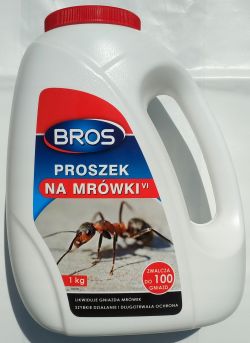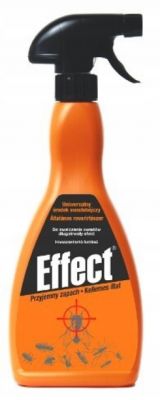Hello!
Today an amazing story came to an end. I would like to tell you about it briefly as a warning.
Behind my house I have a double garage with a so-called annex added on the side measuring approx. 4mx4m. There is an attic above the garage and only the ceiling above the annex. Last year we covered the attic with plasterboard. We made an entrance from the side of the annex. We laid frost-resistant ceramic tiles on the ceiling of the annex. We covered the walls of the garage and the annex with polystyrene and plastered them with 2-3 mm mortar.
After the winter we noticed damp patches on the walls in the annex. So we stripped off the old grout from the tiles and gave new grout. We re-grouted the edges. However, after a month the problem returned. We guessed that the tiles were frozen. Having tapped them all-we found that two were holding, but somehow a strange sound reverberated.... We removed the 3 tiles on the garage side and they re-glued and changed a piece of grout.
After the recent "Polish hurricanes", the problem with damp patches and water in the outbuilding started to get worse and worse. Upset by this state of affairs, we decided to tear off all the tiles.... when tearing off the tiles we noticed some ants near the entrance to the attic.... we watched where they were going.... and we found them... they were going into.... styrofoam! What we saw was beyond our imagination!
The ants were able to come from the ground to the ceiling of the extension (about 2.5m), bite into (or perhaps burn through with acid-venom) the polystyrene. This caused water to seep between these channels under the tiles. Some of the tiles froze out. The water poured and poured and hence the stains on the walls and ceiling.
We had to cut out a piece of polystyrene with plaster.
The ant infestation cost us 16m² of tiles to rip off, cut out some of the polystyrene and made the extension damp. The cost of the tiles and polystyrene has to be borne again.... To be honest, I have never heard of a more bizarre effect of "worker" ants....
So if you see more than two ants near any façade.... it's better to welcome them with water and salt or a 6£ agent.... than pay 600£ for repairs....
I don't wish anyone such an adventure
Regards
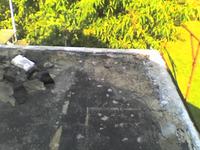 .
.
Tile breaking
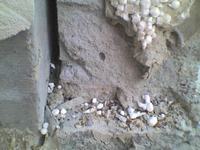
Styrofoam cutting out
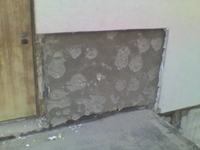
Inter-block ant channels
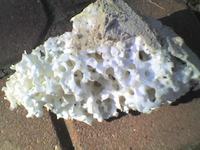
A piece of polystyrene foam treated by ants
Today an amazing story came to an end. I would like to tell you about it briefly as a warning.
Behind my house I have a double garage with a so-called annex added on the side measuring approx. 4mx4m. There is an attic above the garage and only the ceiling above the annex. Last year we covered the attic with plasterboard. We made an entrance from the side of the annex. We laid frost-resistant ceramic tiles on the ceiling of the annex. We covered the walls of the garage and the annex with polystyrene and plastered them with 2-3 mm mortar.
After the winter we noticed damp patches on the walls in the annex. So we stripped off the old grout from the tiles and gave new grout. We re-grouted the edges. However, after a month the problem returned. We guessed that the tiles were frozen. Having tapped them all-we found that two were holding, but somehow a strange sound reverberated.... We removed the 3 tiles on the garage side and they re-glued and changed a piece of grout.
After the recent "Polish hurricanes", the problem with damp patches and water in the outbuilding started to get worse and worse. Upset by this state of affairs, we decided to tear off all the tiles.... when tearing off the tiles we noticed some ants near the entrance to the attic.... we watched where they were going.... and we found them... they were going into.... styrofoam! What we saw was beyond our imagination!
The ants were able to come from the ground to the ceiling of the extension (about 2.5m), bite into (or perhaps burn through with acid-venom) the polystyrene. This caused water to seep between these channels under the tiles. Some of the tiles froze out. The water poured and poured and hence the stains on the walls and ceiling.
We had to cut out a piece of polystyrene with plaster.
The ant infestation cost us 16m² of tiles to rip off, cut out some of the polystyrene and made the extension damp. The cost of the tiles and polystyrene has to be borne again.... To be honest, I have never heard of a more bizarre effect of "worker" ants....
So if you see more than two ants near any façade.... it's better to welcome them with water and salt or a 6£ agent.... than pay 600£ for repairs....
I don't wish anyone such an adventure
Regards
 .
.
Tile breaking

Styrofoam cutting out

Inter-block ant channels

A piece of polystyrene foam treated by ants



